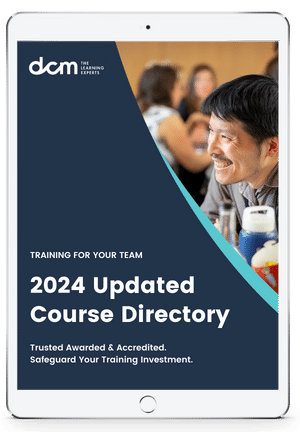The following is a list of Lean Six Sigma projects to consider in a manufacturing environment:
1. Reducing Lead Time in Customer Replacement Part Orders by 41%
This Project Storyboard illustrates the project team’s success in reducing lead time in the process of delivering customer replacement parts. The goal was to reduce the lead time from order submission to order delivery from 8.5 days to 5 days or less. As a result of this project, customers were delighted, complaints reduced, and the team also enjoyed a reduction in freight costs by 8%. The goal was met in two months time.
Process analysis revealed wasted motion, disorganized inventory, and non-value-added activities. There were five potential root causes identified, four of which were confirmed by data, and one was refuted. These validated root causes led to efficiencies in time and motion, the implementation of a kanban system to manage inventory, cross-training/load balancing, and the elimination of NVA activities.
A monitoring plan was established to track lead times and respond if they become excessive. The improvements in this process can potentially be applied to other processes within the organization.
2. Reducing Learning Curve Ramp for Temp Employees by 2 Weeks
In this project, Sean Halpin successfully used Lean Six Sigma methods in speeding up learning — with potential applications throughout the private and public sectors. He was able to not only reduce the time to develop employee capability but was able to show achievement of higher capability levels than before the project.
Sean did a particularly thorough job in analyzing potential root causes and determining appropriate actions. He identified eight potential root causes, half of which proved to be real. A key finding was that training in how to deal with problems was particularly effective. Much training focuses on how things should be — not always considering common problems.
3. Reducing Purchase Order Lead Time by 33% Using Lean Six Sigma
This Project Storyboard involved a cycle time reduction process dealing with purchase order creation. The goal was to reduce the time to create and deliver a purchase order to a supplier from 3 days to 2 days, while also reducing the time to enter quotation information from 5 hours to 4 hours. These goals were successfully met in less than two months.
Process analysis revealed substantial non-value-added activities, especially for approvals. There were six potential root causes identified, two of which were confirmed by data, while the other was refuted. These validated root causes led to the elimination of two approvals and revision of the process to allow multiple parallel inputs, improving overall flow.
A monitoring plan was established to track cycle times and respond if they become excessive. The improvements in this process can potentially be applied to other locations throughout the world.
4. Increasing First Run Parts From 60% to 90% With Lean Six Sigma
This Project Storyboard involved increasing first-run parts from 60% to 90% within two months. This project achieved 87% within the aggressive schedule while dramatically reducing manufacturing lead time.
Improvement in first-run parts yield increased throughput, while process simplification reduced manufacturing lead time, which allowed customer orders to be filled more quickly. This produces a cascading effect of improved customer satisfaction, lower cost and a reduction of order-to-cash time, improving cash flow and ROI.
Lean Reviews: Stories from Our Customers
Over the past 2 years, over 2,000 learners (2,197 to be exact) have come to DCM to learn more about lean and get certified. Read (and watch) their reviews to see how our courses have helped them achieve their career goals.
Inhouse Tailored Training for Your Team
We provide training programs that are developed by industry, for industry. Our range of programs can be delivered in a way that suits the needs of your business to offer your employees learning that is accessible and flexible.
We add value to your business by providing specialised, flexible and scalable training that meets your training needs. As your workforce grows and evolves, our globally certified and industry-validated learning solutions can assess, train and qualify your employees. For more information on how we can help please visit the in-house training page.
Membership, Stay Connected. Stay Relevant.
Completing a program is a point-in-time exercise that delivers huge value, but there is a next step to maintaining the currency of your skills in the ever-evolving professional world.
Membership is the next step.
A unique platform, membership is designed to ensure that you are in tune and up-to-date with the latest tools, trends and developments. Being a member provides just-in-time training and continuous professional development, and an exclusive and evolving content library informed by subject matter experts and industry leaders.







